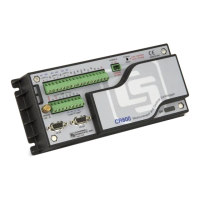Section 5. System Overview
60
A library of sensor manuals and application notes are available at
www.campbellsci.com to assist in measuring many sensor types. Consult with a
Campbell Scientific applications engineer for assistance in measuring unfamiliar
sensors.
5.1.3 CR800 Wiring Panel
The wiring panel of the CR800 is the interface to many CR800 functions. These
functions are best introduced by reviewing features of the CR800 wiring panel.
The figure Wiring Panel
(p. 35) illustrates the wiring panel and some CR800
functions accessed through it.
Read More! Expansion accessories increase the input / output capabilities of the
wiring panel. Read Measurement and Control Peripherals (p. 311) for more
information.
5.1.3.1 Measurement Inputs
Hard-wired measurements require the physical connection of a sensor to an input
channel and CRBasic programming to instruct the CR800 how to make, process,
and store the measurement. The CR800 wiring panel has the following input
channels:
Analog Voltage — 6 channels (Diff 1 to 3 / SE 1 to 6) configurable as 3
differential or 6 single-ended inputs.
• Input voltage range: –5000 mV to 5000 mV.
• Measurement resolution: 0.67 µV to 1333 µV
Period Average — 6 channels (SE 1 to 6)
• Input voltage range: –2500 mV to 2500 mV.
• Maximum frequency: 200 kHz
• Resolution: 136 ns
Note Both pulse-count and period-average measurements are used to measure
frequency output sensors. Yet pulse-count and period-average measurement
methods are different. Pulse-count measurements use dedicated hardware — pulse
count accumulators, which are always monitoring the input signal, even when the
CR800 is between program scans. In contrast, period-average measurement
instructions only monitor the input signal during a program scan. Consequently,
pulse-count scans can usually be much less frequent than period-average scans.
Pulse counters may be more susceptible to low-frequency noise because they are
always "listening", whereas period averaging may filter the noise by reason of
being "asleep" most of the time. Pulse-count measurements are not appropriate for
sensors that are powered off between scans, whereas period-average
measurements work well since they can be placed in the scan to execute only
when the sensor is powered and transmitting the signal.
Period-average measurements utilize a high-frequency digital clock to measure
time differences between signal transitions, whereas pulse-count measurements
simply accumulate the number of counts. As a result, period-average
measurements offer much better frequency resolution per measurement interval,

